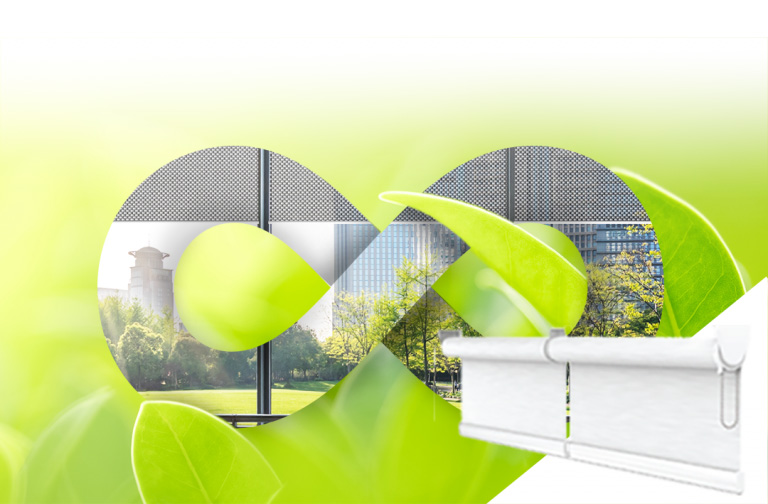Architects and building managers are looking for new ways to design buildings that inspire healthier lifestyles and encourage wellness. With more businesses returning to the office, workplace wellness and sustainability are hot topics. Some businesses focus on employee wellness at the core with programs for mental health, employee education, and physical wellness programs. Businesses don’t realize that employee wellness can be fostered through a healthy and environmentally sustainable work environment as well. A healthy work environment starts at the conception of a green building, no matter what phase of construction the building is in, both new construction and renovations.
On average, a person spends over 90,000 hours of their lifetime at work. This is one-third of an average person’s life (1). The work environment needs to foster wellness through office design. Studies through International WELL Building Institute (IWBI) have shown that interior design and sustainable building initiatives by management can help improve employee wellness and decrease the number of sick days an employee takes.
Building occupants within WELL and LEED-certified buildings benefit from the long-term benefits of sustainable living and environmentally healthy surroundings within the building. These benefits can positively affect mental health and job performance. LEED and the WELL v2 accreditation programs are two programs that architects and building owners can implement green building principles to create healthier buildings for people.
What is LEED?
Leadership in Energy and Environmental Design (LEED) is used to rate buildings based on how eco-friendly they are. LEED is for all building types at any stage of the building process. LEED provides buildings a framework for green building concepts through design, construction, and operations. LEED certification is a program run by the U.S. Green Building Council.
LEED focuses on building health toward the environment through maintenance of energy usage, green construction materials, indoor air quality, and waste management. LEED accreditation is based on how a building affects the environment. LEED certification can happen at any point in a building’s life. LEED certification is obtained by applying here.
LEED has both people benefits and economic benefits. LEED offers comprehensive frameworks for designing green building projects. Improve building health through lighting initiatives and cleaner air. Studies have shown that employers that operate in LEED-certified buildings have higher retention rates and increased employee productivity.
This improved quality of life in LEED-certified buildings has health benefits as well. Benefits that are often taken for granted like cleaner air and access to natural daylight can reduce health conditions like depression, allergies, and stress.
Download our LEED Credit Qualification Form
What is WELL?
WELL is an occupant comfort and health certification offered by the International WELL Building Institute (IWBI). From new construction to renovation WELL standards can be implemented at any building phase a project is in. WELL uses LEED indoor air quality standards as a starting point for its accreditation process. WELL building standards are more than air quality, they focus on areas like window access, nutritional access, and psychological factors.
For a building to be WELL certified, they need to reach a certain number of points overall. Adding these Rollease Acmeda shading systems listed on the WELL v2 product guide to a project does not ensure that the building will be WELL certified. These products help guide building projects towards accreditation. Products like Contract Series Cand Ambient Renew guide buildings towards WELL credits like innovation, natural lighting, and enhanced air quality.
Click to download the Rollease Acmeda WELLv2 Product Knowledge Guide
Building Sustainable
While LEED certifications focus on the building’s energy consumption and how a building is contributing to the environment, WELLv2™ focuses on the people inside of the building. Both LEED and WELL are important to having a sustainable and environmentally healthy building.
Both programs have sections that cross-reference each other. Communities with completed LEED projects may also qualify for WELLv2™ accreditation with several of the products already installed in the building. Rollease Acmeda has a range of training and shading systems that help buildings reach the LEED building accreditation and WELLv2™ guidelines.
Another common standard for businesses to comply with is the Living Building Challenge (LBC) Red List. LBC Red List approved products are products free from specific harmful chemicals. LBC Red List products aim to eliminate all the chemicals on the LBC Red List from products used in commercial buildings.
Rollease Acmeda Contract offers both Contract Series and Contract Series that are both LBC complaint. Both systems paired with certain Texstyle fabrics also help buildings qualify for accreditation through both LEEDv4.1 & WELLv2™.
Pair Contract Series and Contract Series shading systems with Texstyle’s Ambient Renew fabric collection. Ambient Renew is free from harmful chemicals as listed on the LBC Red List and by Oeko-Tex Standard 100, making Ambient Renew with REPREVE® both a healthy and sustainable solution for commercial applications.
At Rollease Acmeda, our team of Contract Specialists are certified with LEED professional credits. If you or your team have any additional questions about LEED 4.1 & WELL v2™ accreditation, adding LBC Red List compliant products to your projects, reach out to the team at [email protected].

